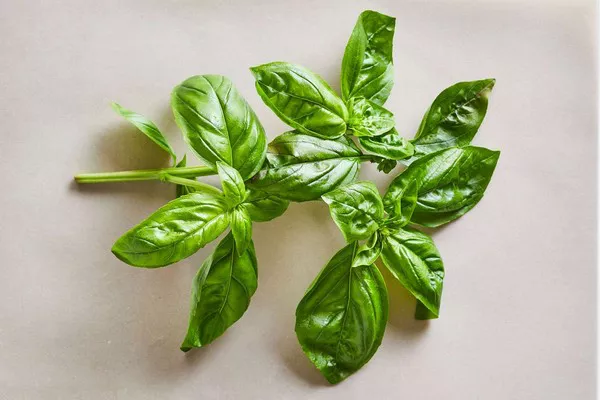In the quest for sustainable and eco-friendly solutions to combat pests, mint has emerged as a compelling candidate with its aromatic allure and purported insect-repelling properties. This article aims to explore the question: Is mint truly a natural insecticide effective against pests? As we delve into the scientific aspects, anecdotal evidence, and practical applications of mint in pest management, we will uncover the potential of this herbaceous plant in addressing the persistent issue of pest infestations.
The Aromatic Arsenal: Mint’s Natural Defense Against Pests
The aromatic compounds found in mint are the cornerstone of its reputed pest-repelling capabilities. Mint’s distinctive fragrance is attributed to essential oils, including menthol, pulegone, and limonene, which not only contribute to its pleasing scent but are believed to have insecticidal properties. These compounds are thought to interfere with the olfactory receptors of pests, creating an environment that is inhospitable for their survival.
See Also: How to get rid of white pests on plant?
Scientific Insight into Mint’s Insecticidal Properties
Scientific research has delved into the efficacy of mint as a natural insecticide, aiming to validate the claims rooted in traditional wisdom. Numerous studies have explored the impact of mint essential oil on various pest species, providing valuable insights into its potential role in pest management.
In a study published in the Journal of Agricultural and Food Chemistry, researchers investigated the insecticidal and repellent properties of mint essential oil against stored product pests. The findings revealed that mint essential oil exhibited significant repellency against several pest species, suggesting its potential as a natural alternative for protecting stored grains and crops.
Furthermore, a study in the Journal of Economic Entomology explored the effectiveness of mint essential oil as a repellent against mosquitoes, a notorious pest with implications for public health. The results indicated that mint oil demonstrated promising repellent activity, positioning it as a potential natural solution for mosquito control.
Practical Applications: Mint in Pest Management Strategies
The scientific evidence supporting mint’s insecticidal properties has paved the way for practical applications in the field of pest management. Mint-based products, such as insect repellent sprays and candles, have become popular choices for individuals seeking a natural alternative to synthetic pesticides.
For homeowners dealing with indoor pests like ants, cockroaches, and spiders, mint essential oil can be diluted and used as a natural spray around entry points and potential nesting sites. The strong scent acts as a deterrent, discouraging pests from infiltrating living spaces.
In agriculture, the concept of intercropping – planting mint alongside susceptible crops – has gained attention. The aromatic barrier created by mint may help protect crops from insect pests, reducing the reliance on chemical pesticides and promoting a more sustainable and environmentally friendly approach to agriculture.
Considerations and Challenges
While mint shows promise as a natural insecticide, it is crucial to acknowledge the challenges and considerations associated with its use in pest management strategies. One notable concern is the potential invasiveness of certain mint varieties. Mint has a tendency to spread rapidly and can become invasive, posing a threat to native plant species. Careful selection of non-invasive mint varieties and proper management practices are essential to prevent unintended ecological consequences.
Moreover, the spectrum of pests that mint effectively repels may vary. While it may show efficacy against certain insect species, it may not offer comprehensive protection against all pests. Integrated pest management, combining multiple strategies, remains essential for addressing diverse pest populations effectively.
The Role of Mint in Sustainable Agriculture
In sustainable agriculture, where minimizing the environmental impact is paramount, the potential of mint as a natural insecticide is particularly appealing. Mint’s compatibility with organic farming practices and its ability to deter pests without resorting to synthetic chemicals align with the principles of sustainable agriculture.
Researchers are exploring innovative approaches, such as the development of mint-infused mulches and companion planting techniques, to enhance the insect-repelling effects of mint in agricultural settings. These methods aim to harness the power of mint in creating pest-resistant ecosystems, reducing the need for conventional pesticides and fostering a more sustainable and resilient agricultural landscape.
Balancing Act: Mint in Integrated Pest Management
While mint offers promising possibilities as a natural insecticide, it is important to emphasize that it should be viewed as part of a holistic integrated pest management (IPM) strategy. IPM involves the coordinated use of various pest control methods, including cultural practices, biological control, and targeted pesticide applications, to manage pest populations effectively.
Mint’s role in IPM may involve combining its repellent properties with other strategies tailored to specific pest challenges. This multifaceted approach ensures a comprehensive and sustainable pest management plan that minimizes environmental impact while protecting crops and structures from the damages inflicted by pests.
Conclusion
In conclusion, mint’s potential as a natural insecticide in pest management is supported by scientific research and practical applications. The aromatic compounds in mint, particularly its essential oils, demonstrate repellent and insecticidal properties against a range of pests. From indoor pest control to agricultural applications, mint offers a natural and eco-friendly alternative to synthetic pesticides.
However, it is crucial to approach mint-based pest management strategies with a nuanced perspective, considering factors such as plant invasiveness and the need for a holistic approach to pest control. By incorporating mint into integrated pest management practices, we can harness its potential while addressing the complexities of diverse pest populations. Mint, when used responsibly, stands as a valuable ally in the ongoing endeavor to strike a balance between effective pest control and environmental sustainability.


